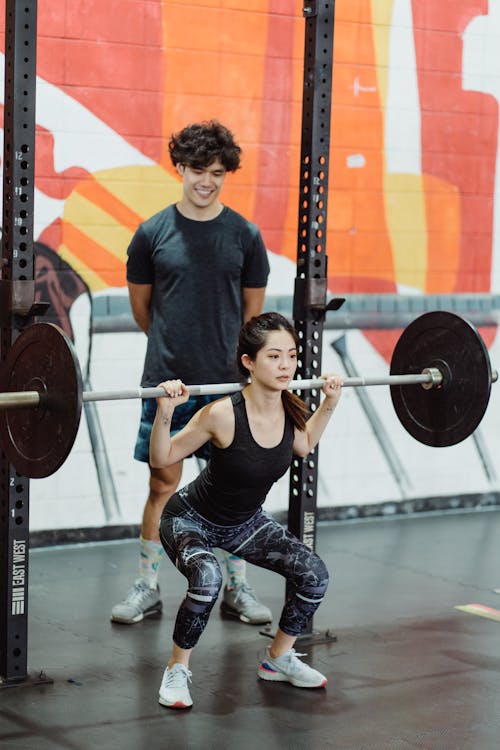27 Capítulo 3: Sección 2: Me gusta / No me gusta
Section Goal
In this section, students will learn how to describe likes, dislikes, and preferences.
El verbo gustar
We have seen gustar here and there already, and you may have noticed that it behaves a little differently than our usual verbs. For example, to say “I like,” we do not say “yo gusto”; we say “me gusta.” The reason for this is that we are actually saying that something is pleasing to us. The sentence structure is different because instead of someone doing something, something is happening to someone. Therefore, instead of using subject pronouns, we need to use indirect object pronouns with the verb gustar (see the chart below).
Step 1: Pick your pronoun
| To me | Me |
| To you (informal) | Te |
| To him
To her To you (formal) |
Le |
| To us | Nos |
| To y’all (Spain) | Os |
| To them
To you guys (Lat. Am.) |
Les |
Step 2: Choose gusta or gustan.
You will choose which form of gustar to use based on what follows it. If it is followed by a singular word or an infinitive, you will choose gusta. If it is followed by a plural noun, you will choose gustan.
Step 3: Include definite article (el, la) + noun or a verb in the infinitive form.
If you use a noun, it must be accompanied by its definite article (el, la, los, or las).
- Me gusta el golf
- I like golf
If you use a verb, leave it in the infinitive. You can list as many as you like!
- Nos gusta nadar
- We like to swim
Additional Information
While you must use the indirect pronouns with gustar (me, te, le, nos, os, or les) it’s not uncommon to also see an “a.” This is especially true for le and les, because it helps clarify who it is that you are talking about. I call it “additional information” because an “a” goes in front of the extra information.
Ejemplos:
- A Juan le gusta correr.
- A ella le gustan los libros.
As you can see in the examples above, if we would like to include a subject, we need to include “A” in front of the subject.
We can also use “A mí” and “A ti” to provide extra emphasis for me and te.
| A mí | Me |
| A ti | Te |
| A él
A Jaime A mi hermano A ella A Leticia A mi amiga |
Le |
| A nosotr@s | Nos |
| A vosotr@s | Os |
| A ellos
A ellas A Spencer y a Enrique A mis amigos A mis padres |
Les |
Actividad 16. ¿Te gusta o no?
Instructions: You and your classmate will share about likes and dislikes. In the following audio, you will hear some questions about likes. In the video, someone will answer the questions below. Use both audio and video as guides to complete the activity.
Step 1: Answer the following questions about what you like.
- ¿Te gusta esquiar?
- ¿Te gusta ir al lago?
- ¿Te gusta correr?
- ¿Te gusta el café?
- ¿Te gustan las papas al horno?
- ¿Te gustan los perros?
- ¿Te gustan las galletas y el chocolate?
Step 2: Use the questions from step 1 to initiate a conversation with a partner.
Use the following reactions to help you continue the conversation:
Agreeing: Me too / Me neither
- A mí también—Me too (use when agreeing with a positive statement).
- Me gusta la leche. ¡A mí también!
- A mí tampoco—Me neither (use when agreeing with a negative statement).
- No me gusta la leche. ¡A mí tampoco!
Disagreeing: I do / I don’t
- A mí, no—I don’t (use when disagreeing with a positive statement).
- Me gusta la leche. ¡A mí, no!
- A mí, sí—I do (use when disagreeing with a negative statement).
- No me gusta la leche. ¡A mí, sí!
Actividad 17. Rellenar el espacio

Instructions: Use clues in each sentence to determine which indirect object pronoun is required as well as which form of gustar is appropriate.
- A Julia ___ _______ levantar pesas (lift weights).
- A mi novia ___ _______ cocinar.
- ¿A ti ___ _______ los sándwiches de pavo?
- ¿A usted ___ _______ los gatos?
- A Sarita y a mí ___ _______ ir al cine.
- A ustedes ___ _______ viajar.
Actividad 18. Aguafiestas

Instructions: ¿Eres tú un aguafiestas? Respond to the questionnaire below to determine whether or not you are a party pooper.
Score two points each time you answer sí, one point each time you answer a veces, and zero points each time you answer no. Then, check the rating system below to see the response!
- Sí
- A veces
- No
- Me gusta ir a conciertos.
- Points:
- Me gusta la comida.
-
- Points:
-
- Me gusta bailar.
- Points:
- Me gustan las fiestas.
- Points:
- Me gusta hablar con la gente* (people).
- Points:
- Me gusta extenderles invitaciones a otros.
- Points:
- Me gusta salir con amigos.
- Points:
- Me gusta hacer nuevos amigos.
- Points:
- Me gusta probar* (to try) cosas nuevas.
- Points:
- Me gusta dar fiestas en mi casa.
- Points:
Rating System
- Si tienes entre 15 y 20 puntos, tú eres el alma de la fiesta.
- Tú eres una persona sociable. A ti le gusta conocer a nuevas personas y hacer nuevos amigos y lo hace fácilmente. Pero no es tan fácil para todos. Una persona como tú puede ayudar a las personas más tímidas en una fiesta con un esfuerzo a conocerlas, a empezar conversaciones y a hacer presentaciones entre personas que tienen intereses comunes.
- Si tienes entre 8 y 14 puntos, tú eres una persona normal.
- A ti te gustan las fiestas pero te da igual quedarte en casa con un buen libro de vez en cuando. Usted tiene un buen equilibrio entre el tiempo que pasa en situaciones sociales y el tiempo que pasa a solas.
- Si tienes entre 0 y 7 puntos, tú eres un aguafiestas.
- La vida es para disfrutarla. Si a ti te gusta pasar tiempo a solas, no hay problema. Pero si tú te sientes triste por nunca pasar tiempo con amigos, hay que tomar pequeños pasos para reconectarse con la vida social. Hoy es un buen día para llamar a un viejo/a amigo/a.
*Este cuestionario solo sirve para entretener; no se debe interpretarlo como consejos. This questionnaire is only for entertainment; it should not be interpreted as advice.

